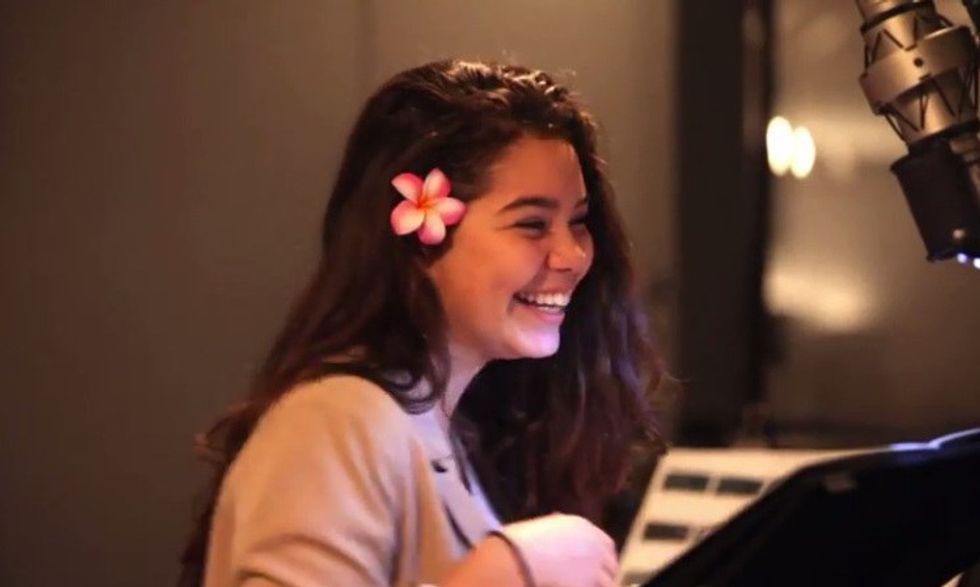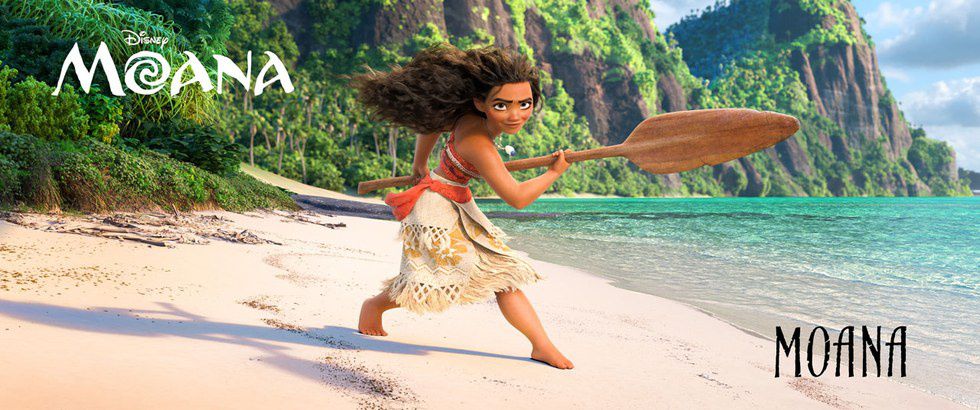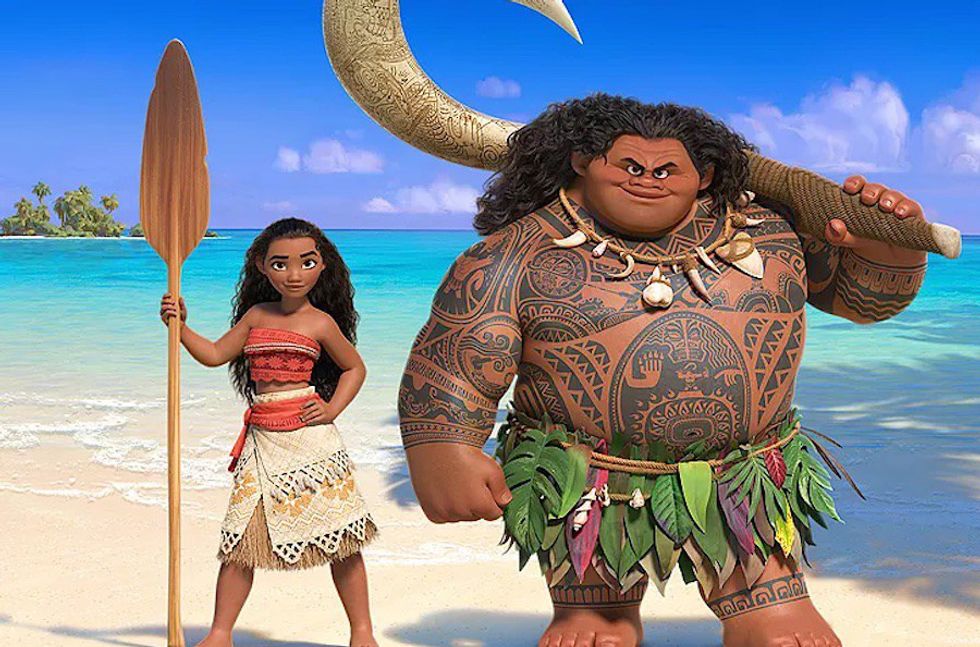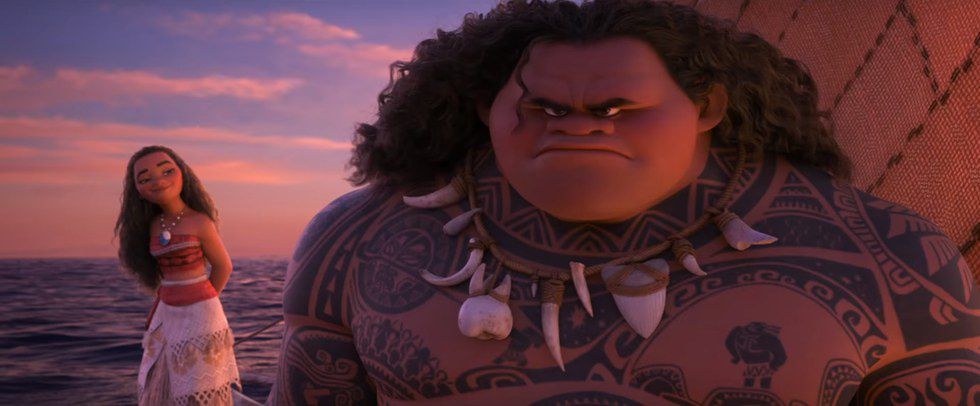"Moana" is Disney’s upcoming animated film set to be released this Thanksgiving. As the date of the premiere approaches, we’ve been given more and more information on the story, and a lot of that info has important repercussions. Here are just a few examples of why this movie is more important that your average Pixar film.
1. People of Color Played by People of Color
The film focuses on the South Pacific, an area largely neglected by the film and animation industry, and features Polynesia characters. The main character, Moana, is played by Auli'i Cravalho who is a native Hawaiian of Chinese, Portuguese, and Irish descent. The actor starring opposite of her, Dwayne Johnson, plays the demigod Maui. Johnson is of Samoan descent. It’s common in animated films to use white actors to play people of color because voice, not color is the main necessity. However, "Moana" refuses to continue that trend.
The diversity is also not limited just to the main characters, as the majority of the cast also consists of people of color, with only Moana’s pet rooster played by a white actor. They also have people of color writing the music and lyrics, with Lin-Manuel Miranda from "Hamilton" as the most well-known of the writers.
2. Strong Female Lead
While a lot of the marketing for the film has focused on Maui (probably because he’s played by the most well-known of the cast, Dwayne Johnson) what the previews have shown of "Moana" is that she’s a very strong female lead. When she meets Maui, she gets furious at him, refusing to back down even if he’s a demigod. She also orders him around on her boat as one of the trailers shows. Yet she’s not all rough edges. When she first sees Maui, she instinctively hides, protecting her pet rooster, and shows fear when she gets caught in a storm. Rather than fit into a stereotype of “nice and polite” or “rude and standoffish,” Moana offers bits of both, making her a well-rounded character, and thus a strong female.
3. Body Diversity
While I’ll admit, the female characters in this film appear to still be lacking in this area, the male characters’ proportions have shifted. Normally in animated films, the princely or heroic characters get portrayed as muscular, while the villains or comic relief get pictured as obese. There was some controversy when the first image of Maui got released, as he’s proportioned rather largely, and many worried that he would be taken as “fat” or “obese.” However, as the trailers have now shown, his size appears distinctly muscular and healthy. Moana’s father also takes on a similar, large stature. At no point so far has the male characters’ size been marketed as a joke or played off as comic relief. Rather, it gets accepted as a normal body type, as it is for so many in the world. The film could stand to improve by including women into that acceptance, but it’s a step in the right direction.
4. No Romance
It’s been confirmed that Moana won’t have a love-interest in the film. This comes as a refreshing break from most of Disney’s films with female main characters. Almost every Disney princess is known for her romantic relationships, and even the films that avoid a romance with a princess often find ways to incorporate the idea of romance. In "Frozen," while Elsa remains single, her sister pursues love for almost the entire film, and in "Brave," Merida doesn’t end up with a suitor, but her entire story comes as the result of refusing romance. Yet, none of the trailers give an indication that romance will feature prominently in Moana. While it’s completely fine for stories to be about romance, it’s also important that romance is the only theme out there. Children, especially little girls, need to see that they don’t have to be in relationship to do great things or be happy.
While we won’t know truly how great a job "Moana" does with social issues until it comes out, it’s definitely worth the support from its progressive stance alone. Also, come on, we already know it’s going to feature some amazing music.





















